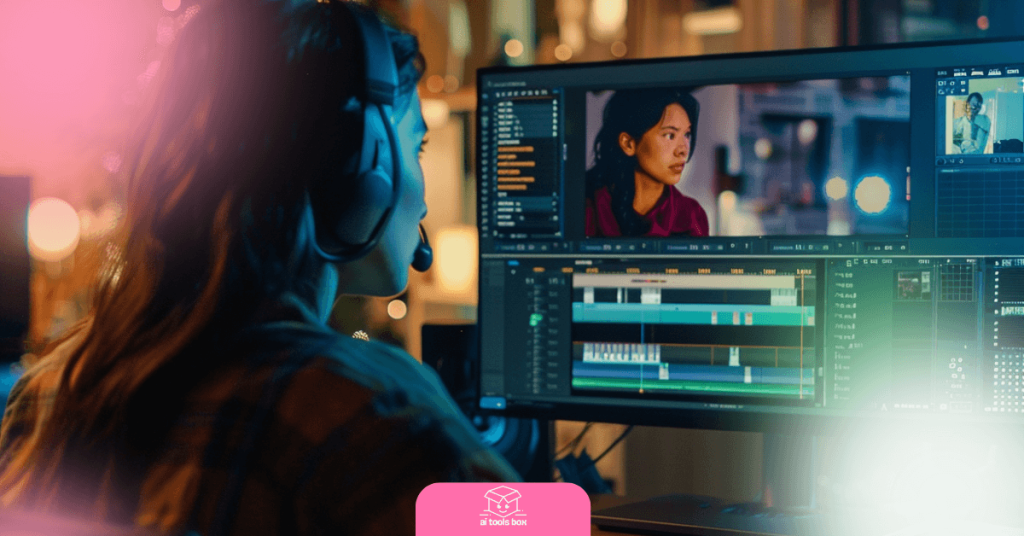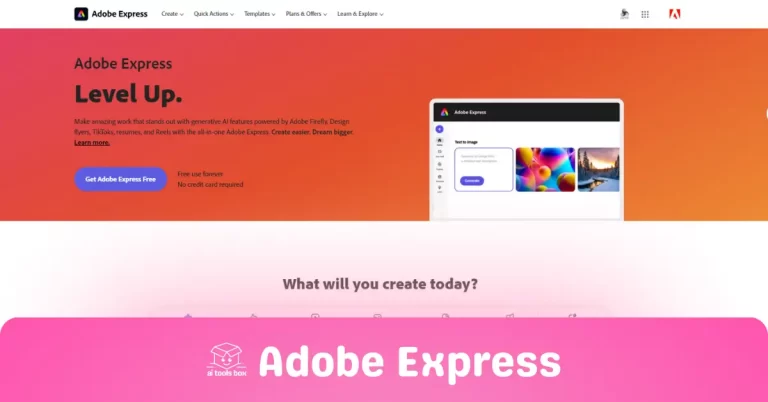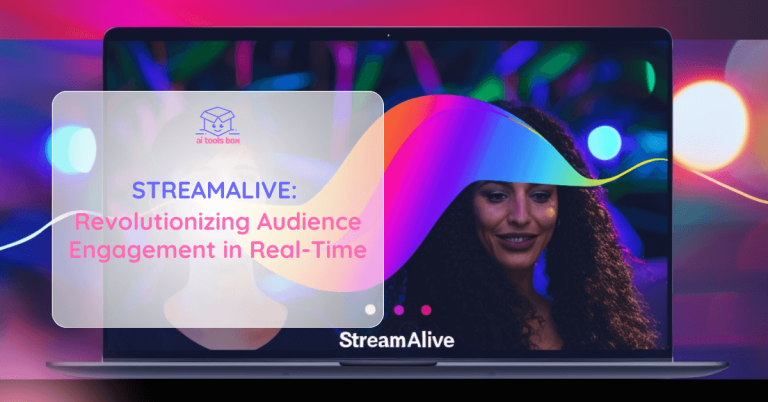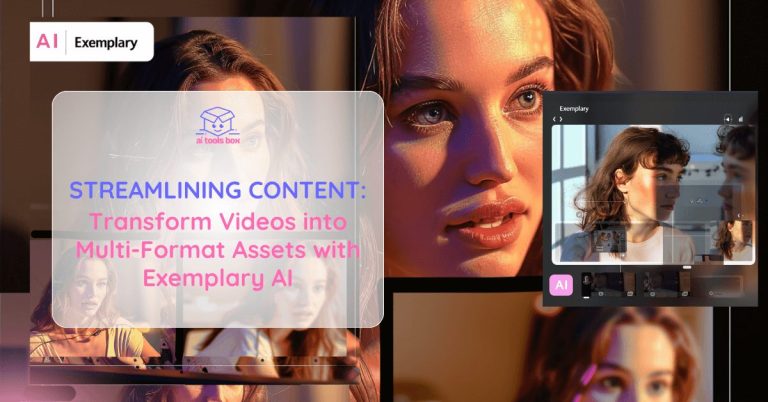Understanding AI in Content Creation
Definition and Key Technologies
Artificial Intelligence in social media content creation encompasses the use of machine learning algorithms, natural language processing (NLP), and data analytics to enhance and streamline the content development process. These technologies enable AI to analyze vast datasets quickly, predict user preferences, and automate repetitive tasks, thus allowing creators to focus on more creative and strategic activities.
Role of AI in Enhancing Human Creativity
AI tools are not just facilitators of automation; they are enhancers of human creativity. By providing data-driven insights and freeing up time from routine tasks, AI allows creators to explore new creative territories. For instance, AI-powered content suggestions can inspire new topics or perspectives that might not have been immediately obvious, enhancing the richness of the content offered.
Real-World Examples of AI in Action
Several high-profile cases highlight the impact of AI in social media content creation:
- Automated Personalization: Platforms like YouTube and Facebook use AI to analyze user behavior and tailor content recommendations, significantly increasing user engagement and time spent on the site.
- Content Optimization: Tools such as BuzzSumo employ AI to analyze what content performs best for a topic or competitor, providing creators with valuable insights into their content strategy.
- Creative Content Generation: AI-driven platforms like Jasper can generate draft posts, suggest content improvements, and even create engaging headlines, reducing the time and effort needed for content creation.
These examples demonstrate how AI not only simplifies content creation but also elevates its quality and relevance.
AI Tools and Techniques
Detailed Guide to AI Tools
Content Generators
AI content generators utilize natural language processing to create text-based content from scratch or expand upon given prompts. Tools like OpenAI's ChatGPT can generate blog posts, social media updates, and marketing copy that requires minimal human editing.
Design Assistants

Design assistants use AI to suggest or automatically create visual elements that complement textual content. Platforms such as Canva integrate AI to offer design suggestions, enhance images, and layout graphics tailored to specific social media platforms, ensuring that content is visually appealing and optimized for engagement.
Analytical Tools
Analytical tools powered by AI help content creators understand audience behavior and content performance. Google Analytics, for example, uses machine learning to segment audience data and provide insights on user engagement, helping creators to fine-tune their content strategies based on solid data.
Case Studies and Usage Examples
- Case Study:
Spotify’s Personalized Playlists Spotify uses AI to analyze listening habits and create personalized playlists, such as Discover Weekly, which are uniquely tailored to individual tastes. This approach not only keeps users engaged but also introduces them to new music, enhancing user satisfaction and loyalty.
- Case Study:
Nike’s Social Media Campaigns Nike leverages AI tools to analyze social media data and customer feedback, allowing them to create highly targeted and personalized marketing campaigns. This data-driven approach results in higher engagement rates and more effective marketing strategies.

How to Implement AI Tools in Content Creation
Implementing AI in social media content creation involves several steps:
- Identify Objectives: Define what you aim to achieve with AI, whether it's increasing engagement, reaching a broader audience, or streamlining content production.
- Select Appropriate Tools: Choose AI tools that align with your objectives and integrate seamlessly with your existing platforms.
- Train and Test: Implement the tools in a controlled environment to understand their functionality and impact. Use A/B testing to compare the performance of AI-enhanced content against traditional methods.
- Evaluate and Scale: Continuously monitor the results and refine your approach based on feedback and data analytics. Scale AI usage as you gain confidence in its benefits.
Enhancing Content with AI
Personalization at Scale
AI technology excels in analyzing user data and behavior to deliver personalized content to a vast audience. By leveraging AI, content creators can tailor their messages to the individual preferences, behaviors, and interests of their audience segments, making each interaction more relevant and impactful. This approach not only improves user engagement but also significantly boosts the efficiency of marketing campaigns by targeting users with high precision.
Enhanced Creativity and Efficiency
AI tools provide a plethora of options for creative enhancement, from suggesting new content ideas based on trending topics to optimizing existing content for better engagement. Additionally, AI can automate mundane tasks like scheduling posts and analyzing metrics, which frees up creators to focus on the more innovative aspects of content creation. This fusion of AI-driven efficiency and human creativity enables brands to produce consistently compelling and innovative content.
Data-Driven Decision Making
With the vast amounts of data generated by social media platforms, AI's ability to sift through and analyze this data becomes indispensable. Content creators can use AI to identify patterns, track content performance, and understand audience preferences, which informs smarter content strategies. This data-driven approach helps in fine-tuning content to better meet the needs of the audience, ensuring that every post contributes effectively towards achieving strategic goals.
Predictive Analysis and Trend Forecasting
AI's predictive capabilities are pivotal for anticipating future trends and user behaviors. By analyzing current and historical data, AI can forecast upcoming trends, allowing content creators to stay ahead of the curve. This proactive approach to content creation ensures that brands remain relevant and continue to engage their audience with fresh, trend-setting content.
Storytelling and Engagement
Leveraging AI for Storytelling
In the context of social media, storytelling is a potent tool for connecting with audiences on an emotional level. AI enhances this capability by providing insights into what narratives resonate most with different segments of an audience. AI-driven tools can suggest story arcs or themes that are likely to engage viewers, creating a foundation for compelling content that drives emotional connections and retention.
Techniques for Engaging Content
To maximize the impact of storytelling through social media, several AI-enhanced techniques can be employed:
- Dynamic Content Customization: AI can adjust the content based on user interactions in real time. For instance, if a user shows interest in a specific type of post, AI can modify forthcoming content to align more closely with those preferences.
- Emotionally Intelligent Responses: By analyzing the emotional tone of user comments and reactions, AI can help craft responses that are empathetic and tailored, fostering a stronger bond between brand and user.
- Visual Narratives: AI tools can also generate or suggest visual content that complements the story, enhancing the overall appeal and engagement of the posts.
Visual Storytelling with AI

Visual content is indispensable on platforms like Instagram and TikTok, where the immediate impact of an image or video can dramatically influence user engagement. AI-driven tools enhance the creation of such visual content, ensuring it is both high-quality and strategically aligned with the textual narrative.
AI technologies excel in parsing engagement data to suggest visual modifications that resonate with audiences. For instance, AI might analyze which images in a series receive the most likes or comments and suggest similar visual themes or filters for future content. This capability ensures that visuals are not just aesthetically pleasing but also optimized for maximum engagement.
Real-World Examples of AI in Visual Storytelling
- Dynamic Content Tailoring: AI tools like Adobe Sensei harness machine learning to enhance image editing by automating tasks such as cropping, tagging, and color correction, based on user engagement and popular trends. This helps in maintaining a visually appealing standard while saving time and resources.
- Automated Video Editing: Platforms such as Magisto utilize AI to create engaging video content from basic video clips and photos. The AI analyses the uploaded footage for the best scenes and then stitches them together with appropriate transitions and effects, aligned with the user's chosen style theme.
- Real-Time Content Adjustment: In live streaming, AI tools can modify the visual presentation in real-time, responding to audience reactions. For example, if viewers respond positively to a particular type of visual effect during a stream, the AI can increase the frequency of that effect in real-time, enhancing viewer engagement.
- Augmented Reality Filters: Social media platforms like Snapchat and Instagram use AI-driven augmented reality (AR) filters that adjust to the user’s facial movements and surroundings to create engaging and interactive experiences. These filters, which can transform users into different characters or overlay digital makeup, are based on AI's ability to recognize and interpret human faces dynamically.

By leveraging AI in these ways, content creators can craft visual narratives that are deeply personalized and highly engaging. These visuals do not just captivate the audience; they drive stronger emotional connections, making the content memorable and more likely to be shared.
In conclusion, AI enhances visual storytelling by:
- Optimizing visual aesthetics based on data-driven insights to match audience preferences.
- Automating complex visual effects, reducing the need for extensive manual input and allowing creators to focus on creativity.
- Ensuring alignment between visual elements and textual content, enhancing overall narrative coherence and user engagement.
As social media platforms continue to evolve toward more visually-centric content, the role of AI in visual storytelling will become increasingly crucial for creators aiming to enhance their digital presence and engagement.
Interactive and Dynamic Storytelling
Interactive storytelling, where content changes based on user input, provides a unique and engaging user experience. AI can be instrumental in designing these experiences, allowing for stories that adapt and evolve in real time based on user engagement. This not only keeps the content fresh but also deeply personalized, enhancing user involvement and satisfaction.
Practical Applications and Examples
Automated Content Curation and Scheduling
AI can significantly streamline the process of content curation and scheduling. By using tools that automatically curate content based on trending topics, audience interests, and historical engagement data, brands can maintain a consistent presence on social media without constant manual input. Moreover, AI-driven scheduling tools analyze when users are most active online, ensuring that posts are published at optimal times for maximum engagement.
AI-Powered Chatbots
Chatbots enhanced with AI capabilities are becoming an essential tool in digital marketing strategies. These bots can engage with users in real-time, providing personalized responses, facilitating customer service, and even conducting interactive storytelling. For instance, a chatbot could guide a user through a personalized story or marketing experience based on their responses, increasing engagement and providing valuable insights into user preferences.
Sentiment Analysis and Audience Insights
AI tools equipped with sentiment analysis capabilities can interpret the emotional tone behind comments and reactions to posts. This allows brands to gauge public sentiment towards their content and make informed decisions about content adjustments. Additionally, these insights help understand audience needs and expectations better, enabling more effective and targeted content creation.
AI-Generated Visual Content
AI technologies are also revolutionizing the creation of visual content. Tools that generate or enhance images and videos can create custom visuals that are tailored to the brand's aesthetics and audience preferences. This not only helps in maintaining visual consistency across posts but also enhances the attractiveness of the content, making it more likely to catch the user's eye in a crowded social media feed.
Analyzing and Optimizing Content
Performance Analysis Using AI
AI tools can provide comprehensive analytics on the performance of social media content, identifying what types of posts generate the most engagement and why. This allows content creators to replicate successful elements in future posts and adjust strategies that aren’t performing well.
A/B Testing with AI Tools
Using AI for A/B testing enables brands to systematically test different versions of their content to see what resonates best with their audience. This methodical approach helps in refining content strategies and optimizing each post for better engagement.
Feedback Loop and Content Refinement
Establishing a feedback loop where AI continuously learns from interactions and adjusts content accordingly can lead to a significant improvement in content relevance and engagement. This iterative process ensures that the content remains dynamic and continually adapted to audience preferences, driving more consistent and long-term engagement.
Ethical Considerations and Challenges
Addressing AI Bias
One of the critical ethical concerns in AI deployment is the potential for bias in algorithmic decisions. AI systems are only as unbiased as the data they are trained on. It is essential for content creators to ensure that the data used in training AI does not perpetuate existing stereotypes or discriminatory practices. Regular audits and updates of AI algorithms can help minimize these biases, promoting fairness and inclusivity in content creation.
Ethical Use of AI in Content Creation
AI should be used responsibly, particularly when it comes to user privacy and data security. Content creators must be transparent about their use of AI, especially in how they collect, store, and utilize user data. Adhering to data protection regulations and ethical guidelines is not just a legal obligation but also builds trust with the audience, a crucial element in maintaining long-term engagement.
Transparency and Accountability
Transparency in AI operations and decisions helps users understand how and why content is presented to them. This openness can prevent misunderstandings and foster a more trustworthy relationship between social media platforms and their users. Moreover, accountability measures should be in place to address any issues arising from AI inaccuracies or failures, ensuring that users can report concerns and receive prompt responses.
Future Trends in AI and Social Media Content
Advanced Natural Language Generation
Future advancements in Natural Language Generation (NLG) will likely enable AI to produce even more sophisticated and nuanced content that closely mimics human writing styles. This improvement will enhance the authenticity and engagement of AI-generated content, making it increasingly indistinguishable from content written by human authors.
AR and VR Content Experiences
The integration of Augmented Reality (AR) and Virtual Reality (VR) with AI will open up new avenues for creating immersive and interactive content on social media platforms. These technologies can transform how users interact with content, offering novel ways to engage and entertain audiences, potentially revolutionizing social media marketing strategies.

Voice and Conversational AI
As voice-assisted devices become more prevalent, AI-driven voice and conversational interfaces will play a significant role in content interaction. This trend will make content more accessible and personalized, enhancing user experience and engagement across various platforms.
Predictive Content Strategies
AI’s capabilities in predictive analytics will continue to evolve, enabling content creators to better anticipate audience needs and trends. This foresight will allow for more proactive content strategies, ensuring that brands can stay ahead of market curves and cater effectively to their audiences.





